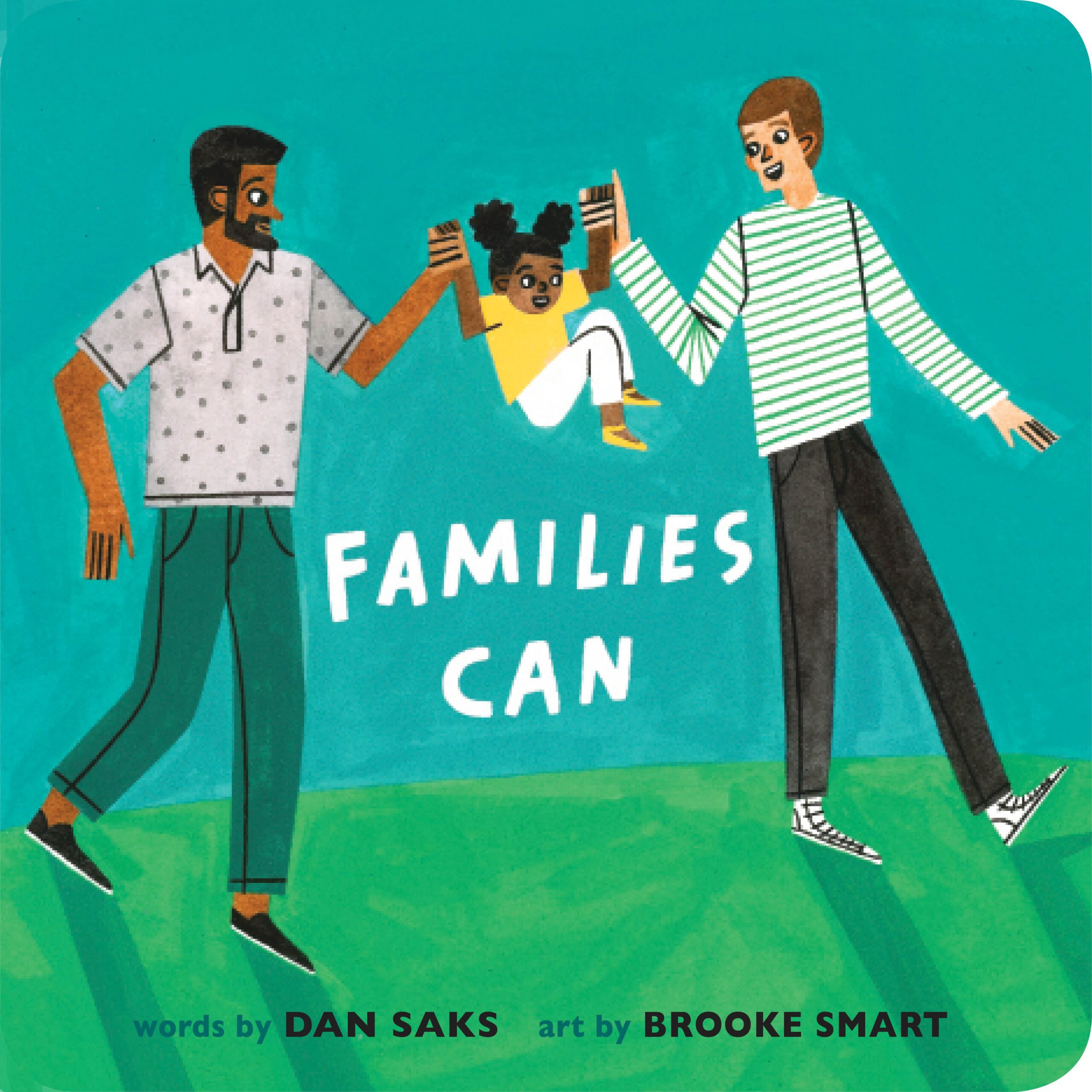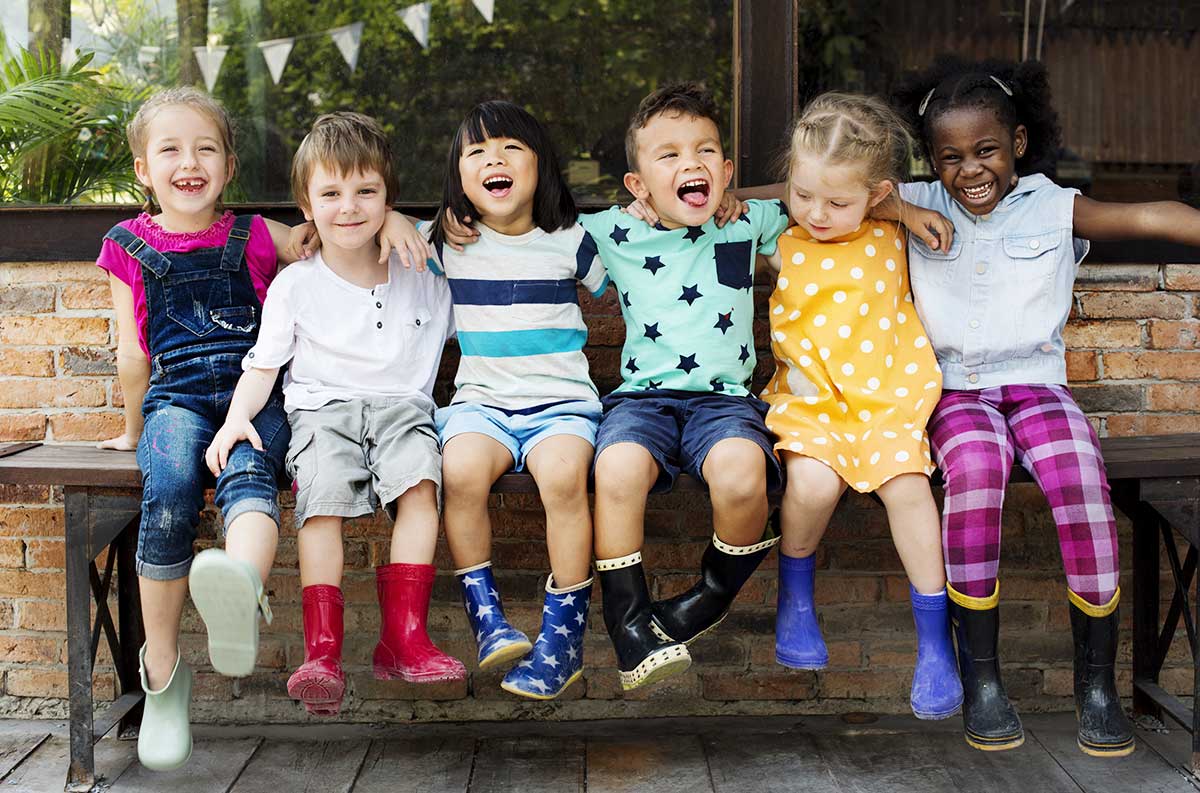
Inclusive Children's Book Teaching Guide
Families Can
What is this book about?
A rhyming, lighthearted celebration of the wonderful differences that make each family unique.
A family can be
Any kind of number
Maybe there's one parent
Strong like thunder
This charming board book is for all families: families who cook together and families who sing together, big families and small families, families who live together and families who live separately. Celebrate the differences that make each family unique and the similarities and love that connect us all together.
Who is depicted in this book?
- LGBTQ+ led families
- Children and adults who transcend gender stereotypes
- Multiracial families
What early childhood themes and concepts does this book explore?
- How people vary in their appearance, including skin color, clothing, hair, etc.
- Families come in many forms, including size and different types of family members
- How families spend time together
How does this book support anti-bias education?
Families Can features representation of LGBTQ+ families, which teachers can use to help children develop an awareness of the many different kinds of families and how these families love and care for their children. Teachers can also use this book to help foster a sense of individual and family pride by encouraging children to celebrate their own identities and share information about their families and family traditions.
Depending on how the book is shared or used—and the developmental level of the children—this book may be used to support the following core goals from the book, Anti-Bias Education for Young Children and Ourselves:
Identity—Teachers will nurture each child’s construction of knowledgeable and confident personal and social identities so that children will demonstrate self-awareness, confidence, family pride, and positive social identities.
Diversity—Teachers will promote each child’s comfortable, empathetic interactions with people from diverse backgrounds so that the children will express comfort and joy with human diversity, use accurate language for human differences, and form deep, caring connections across all dimensions of human diversity.
How can this book be used to meet early childhood learning standards?
For all ages
Use Families Can to meet early childhood literacy standards >
For children from birth to age three
Teaching suggestion: Point out family members in the book. Encourage the children to name their own family members and talk about them.
What Illinois Early Learning Guideline does this meet for children from birth to age three?
Developmental DomainSocial-Emotional Development
Standard: Self-ConceptChildren develop identity of self.
Indicators for children:
- Shows awareness of significant people by calling them by name, such as “papa” (7–18 months)
- Points to self in media (16–24 months)
- Names people in their family and shares stories about them (21–36 months)
Teaching suggestion: Point out everyday actions that are familiar to the children and that the youngest children can react to, point at, or name.
What Illinois Early Learning Guideline does this meet for children from birth to age three?
Developmental DomainSocial-Emotional Development
Standard: Relationship with PeersChildren demonstrate the desire and develop the ability to engage and interact with other children.
Indicators for children:
- Begins to engage in parallel play, in closer proximity to other children but without attempting interaction (7–18 months)
- Begins to engage in simple reciprocal interactions such as rolling a ball back and forth (16–24 months)
- Demonstrates a preference for select peers (21–36 months)
For preschoolers (ages three to five)
Teaching suggestion: Discuss with the children how the families depicted in the book are similar to or different from their own.
What Illinois Early Learning and Development Standards does this meet for preschoolers?
Language Arts Standard1CUse language to convey information and ideas.
Benchmark 1.C.ECa:
Describe familiar people, places, things, and events and, with teacher assistance, provide additional detail.
Teaching suggestion: Identify the rhyming words throughout the book.
What Illinois Early Learning and Development Standards does this meet for preschoolers?
Language Arts Standard4CDemonstrate an emerging understanding of spoken words, syllables and sounds (phonemes).
Benchmark 4.C.ECb:
With teacher assistance, recognize and match words that rhyme.
See inside this book.


